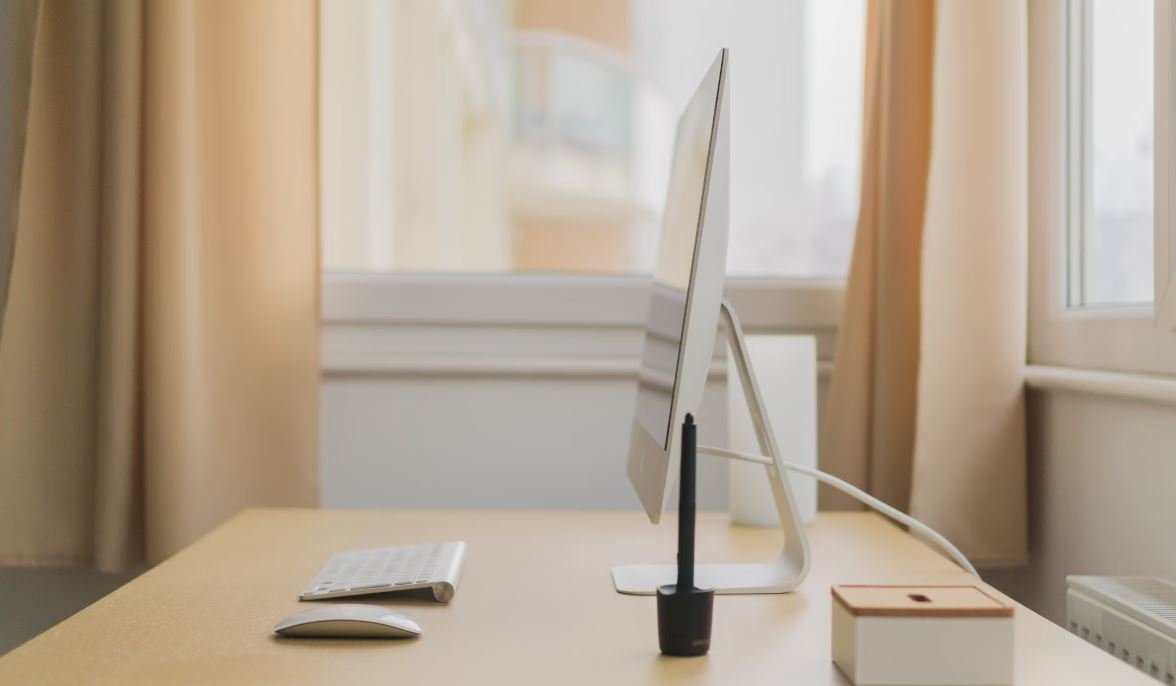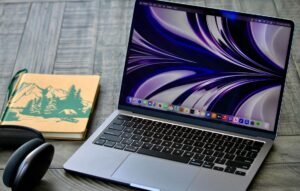Writing a Cover Letter
Welcome to our informative article on writing a cover letter. Whether you are applying for a job, internship, or scholarship, a well-crafted cover letter can greatly enhance your chances of success. In this article, we will provide you with useful tips and guidelines to help you create a standout cover letter that effectively showcases your skills and qualifications.
Key Takeaways:
- A cover letter is a document that accompanies your resume and introduces you to potential employers or hiring managers.
- It should be personalized, concise, and focused on highlighting your most relevant qualifications.
- Your cover letter should address the specific needs and requirements of the job or opportunity you are applying for.
- Proofreading and editing are crucial to ensure your cover letter is error-free and presents a professional image.
- Show enthusiasm and convey why you are interested in the position and how you can contribute to the company or organization.
1. Research and Understand the Job: Before writing your cover letter, thoroughly research the company or organization you are applying to and understand the requirements of the job. This will help you tailor your letter to meet their specific needs and stand out from other applicants. *Highlight your knowledge of the company’s mission and values to demonstrate your genuine interest.*
2. Format and Structure: Use a professional format and structure for your cover letter. Include your contact information, the current date, and the recipient’s name and contact details. Start with a personalized greeting, introduce yourself, and clearly state the purpose of your letter. Divide your letter into paragraphs that discuss your qualifications, relevant experiences, and why you are a good fit for the position. *Utilize bullet points to list your key achievements and skills to make them stand out.*
| Common Sections in a Cover Letter | Optional Sections |
|---|---|
| Introduction / Opening Paragraph | Salary Expectations |
| Qualifications and Relevant Experience | References |
| Skills and Accomplishments | Additional Information |
| Closing Paragraph and Call-to-Action |
3. Showcase Your Skills and Accomplishments: In your cover letter, highlight your key skills and accomplishments that are relevant to the job you are applying for. This is your opportunity to demonstrate how your past experiences make you an excellent fit for the role. *Use strong action verbs and measurable achievements to captivate the reader.*
| Strong Action Verbs | Measurable Achievements |
|---|---|
| Managed | Increased sales by 20% in Q3 2021. |
| Collaborated | Led a team that successfully launched a new product, resulting in a 10% market share gain. |
| Implemented | Streamlined internal processes, reducing operational costs by $50,000 annually. |
4. Address Gaps or Potential Concerns: If you have any employment gaps or potential concerns, address them in your cover letter. Explain how you have utilized this time productively and focus on the transferable skills gained. *Be honest and transparent while emphasizing your ability to adapt and grow.*
- Proofread and Edit: After writing your cover letter, proofread it carefully to eliminate any spelling, grammar, or formatting errors. Ensure your sentences are clear, concise, and well-structured. Ask a trusted friend or colleague to review your letter before sending it.
- Customize for Each Application: Avoid using a generic cover letter for multiple applications. Customize each letter to match the specific requirements and needs of the job or opportunity you are applying for. Research the organization and incorporate relevant details to show your genuine interest.
- Follow Professional Tone and Language: Maintain a professional tone throughout your cover letter. Use formal language and avoid slang or jargon. Keep your sentences and paragraphs concise and to the point.
In conclusion, writing a cover letter is an essential step in the job application process. By following these guidelines and tips, you can create a compelling cover letter that grabs the attention of potential employers and increases your chances of landing the job or opportunity you desire.
Common Misconceptions
Misconception 1: Cover letters are not necessary
One common misconception about cover letters is that they are not necessary and can be skipped when applying for a job. However, cover letters are an essential part of the job application process as they provide an opportunity to showcase your skills, qualifications, and strengths that may not be apparent in your resume alone.
- Cover letters help you stand out among other applicants.
- A personalized cover letter can demonstrate your enthusiasm for the position.
- A well-written cover letter can provide additional supporting information about your relevant experience.
Misconception 2: A generic cover letter works for all applications
Another misconception is that a single generic cover letter can be used for all job applications. However, this is not the case. It is important to tailor your cover letter for each position you apply to, highlighting specific qualifications and skills that align with the job requirements, and addressing the company’s needs.
- Tailoring your cover letter showcases your genuine interest in the specific position.
- A personalized cover letter allows you to emphasize relevant experiences.
Misconception 3: Lengthy cover letters are preferred
Some people believe that a lengthy cover letter is more impressive and will increase their chances of getting hired. However, employers typically prefer concise and to-the-point cover letters that quickly highlight the most relevant information.
Misconception 4: Cover letters simply repeat the resume
It is a misconception that cover letters are meant to restate the content of your resume. Instead, cover letters should expand on your resume by providing context, explaining any gaps in employment, or showcasing your motivation and passion for the job.
Misconception 5: Following a strict template is the best approach
Many individuals believe that using a standardized cover letter template is the best approach to creating an effective cover letter. However, while templates can be helpful as a starting point, it is vital to customize and personalize your cover letter to make it unique to each job application and demonstrate your individuality.
The Importance of a Cover Letter
A strong cover letter is a vital part of any job application. It serves as an introduction to your skills and experiences, and should highlight why you are the best fit for the position. In order to write a compelling cover letter, it is important to understand the key elements that make it effective. The following tables provide valuable data and information to help you master the art of writing a cover letter.
Table: Common Mistakes in Cover Letters
Avoiding mistakes is crucial when crafting a cover letter. This table highlights some common errors that you should steer clear of:
| Mistake | Description |
|---|---|
| 1. Lack of personalization | Sending a generic cover letter without tailoring it to the specific job and company. |
| 2. Lengthy paragraphs | Using large blocks of text instead of concise and clearly organized paragraphs. |
| 3. Grammatical errors | Having spelling or grammar mistakes that can negatively impact your credibility. |
| 4. Focusing on needs | Talking only about what you want from the job rather than highlighting what you can offer. |
| 5. Lack of enthusiasm | Failing to demonstrate your passion and excitement for the position. |
Table: Components of an Effective Cover Letter
A well-constructed cover letter consists of various components. This table breaks down the different elements to include:
| Component | Description |
|---|---|
| 1. Contact information | Include your name, address, phone number, and email. |
| 2. Salutation | Address the letter to a specific person whenever possible. |
| 3. Introduction | Catch the reader’s attention and briefly introduce your background. |
| 4. Body paragraphs | Highlight relevant skills, experiences, and achievements that showcase your qualifications. |
| 5. Closing | Express gratitude, provide contact information, and request the opportunity for an interview. |
Table: Power Words for Cover Letters
Using impactful and persuasive words in your cover letter can leave a lasting impression on the reader. This table presents some effective power words:
| Power Word | Meaning |
|---|---|
| 1. Accomplished | Successfully completed significant tasks or projects. |
| 2. Innovated | Introduced creative solutions or ideas. |
| 3. Collaborated | Worked cooperatively with others on projects or initiatives. |
| 4. Led | Took charge and guided a team or project. |
| 5. Resilient | Demonstrated the ability to bounce back from challenges. |
Table: Recommended Cover Letter Format
The structure and format of your cover letter can greatly impact its readability. This table outlines a recommended format:
| Section | Description |
|---|---|
| 1. Contact Information | Include your name, address, phone number, and email at the top of the letter. |
| 2. Salutation | Address the recipient appropriately, using their name if available. |
| 3. Introduction | Clearly state the purpose of your letter and the position you are applying for. |
| 4. Body Paragraphs | Elaborate on your skills and experiences that relate to the job requirements. |
| 5. Closing | Express gratitude, restate your interest, and provide your contact information. |
Table: Dos and Don’ts of Cover Letters
Knowing what to do and what to avoid can be crucial in creating an effective cover letter. This table offers important guidelines:
| Do | Don’t |
|---|---|
| – Tailor your letter to the specific job | – Use a generic template for every application |
| – Showcase relevant skills and experiences | – Focus solely on unrelated experience |
| – Be concise and to the point | – Write lengthy paragraphs with unnecessary details |
| – Proofread for spelling and grammar | – Neglect to check for errors |
| – Show enthusiasm and passion | – Sound disinterested or unenthusiastic |
Table: Common Cover Letter Phrases to Avoid
Using certain phrases in your cover letter can diminish its impact. This table presents some phrases to steer clear of:
| Phrase to Avoid | Alternative |
|---|---|
| “To whom it may concern” | Address the recipient directly, if possible |
| “I feel” | “I believe” or “I am confident” |
| “I’m perfect for this job” | Highlight specific skills and qualifications |
| “Please find attached my resume” | Simply state that your resume is attached |
| “Thank you for considering my application” | Express gratitude in a more personalized way |
Table: Sample Cover Letter Opening Lines
The opening lines of your cover letter play a significant role in capturing the reader’s attention. This table offers some compelling examples:
| Opening Line | Description |
|---|---|
| “As a results-driven marketing professional…” | Immediately highlights your specialization and expertise. |
| “Having successfully managed various software development projects…” | Showcases your project management skills and previous achievements. |
| “With a passion for environmental conservation and extensive experience in sustainable practices…” | Demonstrates your commitment to environmental causes and relevant experience. |
| “As an accomplished sales representative consistently exceeding targets…” | Highlights your outstanding sales performance and goal-driven mindset. |
| “Having developed innovative marketing strategies for top-tier clients in the digital industry…” | Illustrates your experience in creating effective marketing campaigns. |
Table: Average Time Spent Reading a Cover Letter
Recruiters and hiring managers often have limited time to review each application. This table provides insight into the average time spent reading a cover letter:
| Position Level | Average Time Spent |
|---|---|
| Entry-level | 10-20 seconds |
| Mid-level | 20-30 seconds |
| Senior-level | 30-60 seconds |
Writing an impressive cover letter requires careful attention to detail and a thorough understanding of what employers are looking for. By avoiding common mistakes, incorporating essential components, and utilizing power words, your cover letter is more likely to make a positive impression. Remember to follow the recommended format, adhere to the dos and don’ts, and avoid phrases that weaken your message. With the right approach, you can create a compelling cover letter that effectively showcases your qualifications and increases your chances of landing the job.
Frequently Asked Questions
What is a cover letter?
A cover letter is a document that accompanies your resume when applying for a job. It provides additional information about your skills, qualifications, and experiences that are relevant to the position you are applying for. It is an opportunity to showcase your enthusiasm and explain why you are the perfect fit for the job.
Why is a cover letter important?
A cover letter allows you to personalize your application and highlight your key qualifications that make you a strong candidate. It gives you the chance to expand on your resume and explain why you are interested in the position and how your skills and experiences align with the requirements of the job.
What should be included in a cover letter?
A cover letter should include your contact information, the date, the recipient’s contact information, a salutation, an introduction that states the position you are applying for, a body that highlights your qualifications and experiences, a closing paragraph expressing your interest and enthusiasm, and a professional closing and signature.
How long should a cover letter be?
A cover letter should typically be one page long. It should be concise and focused, highlighting the most relevant information that demonstrates your qualifications for the job.
Should I customize my cover letter for each job application?
Yes, it is highly recommended to customize your cover letter for each job application. Tailoring your cover letter allows you to specifically address the requirements and qualifications stated in the job description. It shows employers that you have taken the time and effort to understand their needs and how you can contribute to their organization.
How should I format my cover letter?
Your cover letter should be formatted using a professional font, such as Arial or Times New Roman, with a font size of 11 or 12. Use standard margins and align your text to the left. It is also a good idea to use bullet points or paragraphs to make your cover letter easier to read.
Can I use a template for my cover letter?
Using a template as a starting point for your cover letter can be helpful, but be sure to customize it to match the specific job you are applying for. Avoid using generic templates that do not reflect your qualifications or goals. Make sure to personalize the content and structure of the cover letter to make it unique and tailored to the position.
What tone should I use in my cover letter?
Your cover letter should have a professional and formal tone. It should be polite, confident, and enthusiastic while remaining concise and to the point. Avoid using jargon, slang, or overly casual language. Remember to maintain a respectful tone throughout the letter.
Should I include my salary expectations in the cover letter?
Unless the job posting specifically requests you to include salary expectations, it is generally not recommended to include them in your cover letter. It is best to discuss salary expectations during the interview process when you have a better understanding of the position, its responsibilities, and the company’s salary range.
How should I end my cover letter?
Your cover letter should end with a professional closing statement expressing your interest in the position and your eagerness to discuss your qualifications further. Use a suitable closing such as “Sincerely,” or “Best regards,” followed by your full name and contact information.



